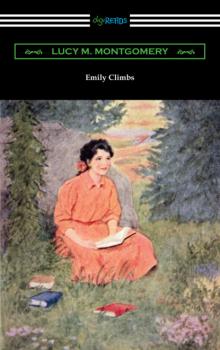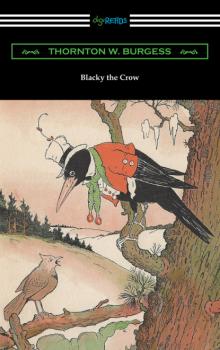Ingram
Все книги издательства IngramEmily Climbs
First published in 1925, “Emily Climbs” is the second book in the “Emily” series by Canadian author Lucy Maud Montgomery. Written two years after the first novel in the series, “Emily of New Moon”, “Emily Climbs” finds Emily Byrd Starr and her new local friends growing up and becoming teenagers. Emily longs to attend the Queen’s Academy in order to get her teaching license, but her conservative relations oppose this idea. Instead, she is allowed to go to Shrewsbury High School with her friends, but must live with her strict Aunt Ruth and is forbidden by her family from writing poetry. Emily refuses to be daunted by these restrictions, continues to work on her writing, and finds success with her short stories and work on the local newspaper. Romantic dramas complicate Emily’s relationships, while she also grows closer to her distant relation, the mysterious Dean Priest. “Emily Climbs” is a timeless and heartfelt coming-of-age story that continues to engage readers may years after its first publication. This edition includes a biographical afterword.
Mrs. Dalloway
Widely heralded as one of the first truly modern novels, Virginia Woolf’s “Mrs. Dalloway” was published in 1925 and is one of the author’s most popular and critically acclaimed works. All of the events of the novel take place on a single day in June 1923 and the novel’s perspective varies often as Woolf journeys inside the minds of many characters as they each experience the day and connect its events to the memories of their past. The two main characters are Clarissa Dalloway, a wealthy woman of high society who is planning a party for that evening, and Septimus Warren Smith, a veteran of the First World War, who continues to suffer from the trauma he experienced on the battlefield. Both characters are constantly aware of the passage of time, as Clarissa often reflects on her happy youth and her missed opportunities for love and passion and Septimus is haunted by his memories of the horror he witnessed and feels death looming ever closer and closer. Heartbreaking and powerfully evocative, “Mrs. Dalloway” is a timeless masterpiece about finding the joy in little things while never completely forgetting the fleetingness of life and the inevitably of death. This edition includes a biographical afterword.
The Great Gatsby
First published in 1925, F. Scott Fitzgerald’s “The Great Gatsby” is widely hailed as one of the most important American novels of the twentieth-century. Fitzgerald’s third novel and his most significant work, it is the tale of the reclusive millionaire Jay Gatsby and his tragic obsession with the lovely and elusive Daisy Buchanan. The novel brilliantly captures the Roaring Twenties, often called the Jazz Age, one of America’s most transformative and iconic time periods. The novel is semi-autobiographical and based in part on Fitzgerald’s own time trying to fit in with the wealthy crowd on Long Island’s North Shore and becoming part of a social class based in decadence and leisure in order to impress the object of his affection. Fitzgerald was deeply conflicted about this wealthy world and “The Great Gatsby” is a biting social commentary, as the rich are shown in all their immoral excess, capable of shocking acts of passion and violence with little remorse or consequences. While underappreciated during Fitzgerald’s own lifetime, “The Great Gatsby” has come to be considered by many as one of the greatest American novels. This edition includes a biographical afterword.
The Everlasting Man
First published in 1925, “The Everlasting Man” by G. K. Chesterton is a powerful argument against the theories of evolution and comparative religion. Chesterton deeply disagreed with the view of animal and human evolution popularized by “The Outline of History” written by H. G. Wells in 1919. Wells argued that human civilization was nothing more than a logical progression from simple animal life and that Jesus Christ was no more than a charismatic leader. In Wells’ view, the Christian religion was merely one amongst many and nothing more. Armed with persuasive arguments and research, Chesterton sought to prove that man was far more than just a special kind of animal and that Jesus was more than just a charismatic individual. Chesterton argues that humans are quite unlike any other animal on earth and have achieved more and understand more than would be possible without the presence of a divine creator. Christianity provides its believers with a true answer to the chaos and suffering the world experienced before Jesus brought his message to his disciples. “The Everlasting Man” made a lasting impression on such respected authors as C. S. Lewis and continues to inspire the faithful with its compelling defense of Christianity. This edition includes a biographical afterword.
Modern Coin Magic
First published in 1952, “Modern Coin Magic” is J. B. Bobo’s classic work on coin magic. The purpose of this efficient guide is to review and discuss all of the practical aspects to coin magic tricks utilizing sleight of hand. Bobo examines all of the older, traditional sleights of hand and retains only those that are truly useful and helpful, discarding any that are out-of-date or impractical to work. “Modern Coin Magic” is remarkable in its ability to present all of the best tips and techniques in one easy-to-read book so that any student of coin magic and sleight of hand will find guidance for their practice and technique. Coin magic tricks are one of the most accessible and useful tricks for any magician to know as coins are always readily available and the ability to do a few sleights of hand is guaranteed to entertain any audience. “Modern Coin Magic” remains a timeless classic, one of the most complete and helpful books ever written on coin magic.
Blacky the Crow
Thornton W. Burgess was an important and influential American conservationist and a prolific author of entertaining children’s stories. For over 50 years, Burgess published numerous popular books on the flora and fauna of the natural world and wrote a regular newspaper column called “Bedtime Stories”. Often affectionately referred to as the “Bedtime Story-Man”, Burgess celebrated his love for the natural world through humorous and educational stories for children in both his books and in his popular column. First published in 1922, “Blacky the Crow” is the engaging and clever story of a mischievous and curious young crow who often sees and does things he should not have. Tempted by the sight of two eggs left unattended in a nearby nest, Blacky hatches a plot to steal them and soon learns an important lesson on making bad choices. Burgess had a special ability to combine an educational story about the behaviors, habitats, and characteristics of the creatures of the natural world while also captivating audiences both young and old. This edition includes a biographical afterword and the original illustrations by Harrison Cady.
The Adventures of Bobby Coon
Thornton W. Burgess was an important and influential American conservationist and a prolific author of charming and witty children’s stories. For over 50 years, Burgess published numerous popular books on the flora and fauna of the natural world and wrote a regular newspaper column called “Bedtime Stories”. Often affectionately referred to as the “Bedtime Story-Man”, Burgess celebrated his love for the natural world through humorous and educational stories for children in both his books and in his popular column. First published in 1918, “The Adventures of Bobby Coon” finds the young raccoon constantly in trouble and on the run in the forest. Chased by Farmer Brown’s son and Prickly Porky the porcupine, it seems like Bobby Coon can never find any peace and quiet. Fortunately, he is soon rescued by his good friend Peter Cottontail, who helps him to find a new home. Burgess had a special ability to combine an educational story about the behaviors, habitats, and characteristics of the creatures of the natural world while also captivating audiences both young and old. This edition includes a biographical afterword and the original illustrations by Harrison Cady.
The Adventures of Buster Bear
Thornton W. Burgess was an important and influential American conservationist and a prolific author of entertaining children’s stories. For over 50 years, Burgess published numerous popular books on the flora and fauna of the natural world and wrote a regular newspaper column called “Bedtime Stories”. Often affectionately referred to as the “Bedtime Story-Man”, Burgess celebrated his love for the natural world through humorous and educational stories for children in both his books and in his popular column. First published in 1916, “The Adventures of Buster Bear” is an engaging story of acceptance, tolerance, and kindness. It has been many years since any bears have lived in the Green Forest when Buster Bear moves in and some of the forest’s long-time residents are not happy with their new neighbor and the changes he brings. However, soon Buster makes friends with Little Joe Otter and Chatterer the Red Squirrel in this charming tale. Burgess had a special ability to combine an educational story about the behaviors, habitats, and characteristics of the creatures of the natural world while also captivating audiences both young and old. This edition includes a biographical afterword and the original illustrations by Harrison Cady.
The Adventures of Jimmy Skunk
Thornton W. Burgess was an important and influential American conservationist and a prolific author of charming and witty children’s stories. For over 50 years, Burgess published numerous popular books on the flora and fauna of the natural world and wrote a regular newspaper column called “Bedtime Stories”. Often affectionately referred to as the “Bedtime Story-Man”, Burgess celebrated his love for the natural world through humorous and educational stories for children in both his books and in his popular column. First published in 1918, “The Adventures of Jimmy Skunk” begins with poor little Jimmy Skunk finding himself the unwilling victim of a funny but mean-spirited prank played by the mischievous Peter Rabbit. Reddy Fox is unfairly blamed for the naughty trick, but soon Peter learns a valuable lesson about treating others with kindness and courtesy. Burgess had a special ability to combine an educational story about the behaviors, habitats, and characteristics of the creatures of the natural world while also captivating audiences both young and old. This edition includes a biographical afterword and the original illustrations by Harrison Cady.
The Adventures of Paddy the Beaver
Thornton W. Burgess was an important and influential American conservationist and a prolific author of charming children’s stories. For over 50 years, Burgess published numerous popular books on the flora and fauna of the natural world and wrote a regular newspaper column called “Bedtime Stories”. Often affectionately referred to as the “Bedtime Story-Man”, Burgess celebrated his love for the natural world through humorous and educational stories for children in both his books and in his popular column. First published in 1917, “The Adventures of Paddy the Beaver” follows the familiar character of Paddy as he moves into the Green Forest and finds it to be more dangerous than he imagined. Pursued by the mean Old Man Coyote, Paddy befriends grouchy Sammy Jay, who helps him escape from the cruel hunter. Soon, Paddy and Sammy become best friends and their forest homes are again happy places. Burgess had a special ability to combine an educational story about the behaviors, habitats, and characteristics of the creatures of the natural world while also captivating audiences both young and old. This edition includes a biographical afterword and the original illustrations by Harrison Cady.









